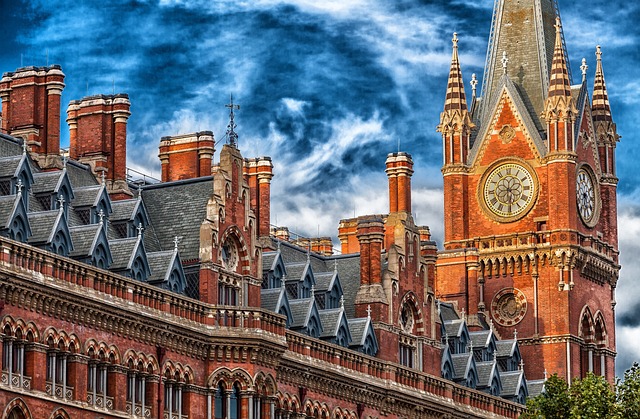British Folklore and Legends: A Journey Through Myth and Mystery

British folklore and legends are a rich tapestry of stories passed down through generations, blending history, myth, and imagination. From tales of heroic knights and mythical creatures to ghostly apparitions and ancient rituals, these stories offer a fascinating glimpse into the cultural heritage of the United Kingdom. This article explores some of the most iconic British folklore and legends, delving into their origins, meanings, and enduring appeal.
The Origins of British Folklore
British folklore has its roots in the oral traditions of the Celtic, Anglo-Saxon, and Norse peoples who inhabited the British Isles. Over time, these stories were influenced by Christianity, medieval literature, and local customs, creating a unique blend of myth and history. Folklore served as a way to explain natural phenomena, teach moral lessons, and preserve cultural identity.
Iconic British Folklore and Legends
Here are some of the most famous legends and folklore from across the UK:
1. King Arthur and the Knights of the Round Table
- Origin: England and Wales
- Story: King Arthur is one of Britain’s most legendary figures, said to have led the defense against Saxon invaders in the 5th or 6th century. His tales include the sword Excalibur, the wizard Merlin, and the quest for the Holy Grail.
- Significance: The Arthurian legends symbolize chivalry, bravery, and the struggle between good and evil.
2. Robin Hood
- Origin: England (Nottinghamshire)
- Story: Robin Hood is a heroic outlaw who, along with his band of Merry Men, robbed from the rich to give to the poor. His adventures often involve outsmarting the Sheriff of Nottingham.
- Significance: Robin Hood represents justice, rebellion against tyranny, and the fight for the underprivileged.
3. The Loch Ness Monster
- Origin: Scotland (Loch Ness)
- Story: Nessie, as the monster is affectionately called, is said to be a large, aquatic creature inhabiting Loch Ness. Sightings date back to the 6th century, with modern interest peaking in the 1930s.
- Significance: Nessie has become a symbol of mystery and the unknown, attracting tourists and researchers alike.
4. The Legend of Sawney Bean
- Origin: Scotland
- Story: Sawney Bean was the head of a cannibalistic clan in the 16th century, said to have lived in a cave and preyed on travelers. While likely a myth, the story has captivated audiences for centuries.
- Significance: The tale serves as a cautionary story about isolation and the darker side of human nature.
5. The Green Man
- Origin: Throughout the UK
- Story: The Green Man is a symbol of rebirth and nature, often depicted as a face surrounded by or made of leaves. He appears in carvings, folklore, and festivals.
- Significance: The Green Man represents the cycle of life and the connection between humans and nature.
6. The Mermaid of Zennor
- Origin: Cornwall, England
- Story: A mermaid is said to have lured a local singer, Mathew Trewhella, into the sea after falling in love with his voice. A carved chair in Zennor Church is believed to depict the mermaid.
- Significance: The story reflects Cornwall’s maritime heritage and fascination with the sea.
7. The Legend of the Selkies
- Origin: Scotland and Ireland
- Story: Selkies are mythical creatures that can transform from seals into humans. Tales often involve selkies falling in love with humans but ultimately returning to the sea.
- Significance: Selkie stories explore themes of love, loss, and the call of the wild.
8. The Beast of Bodmin Moor
- Origin: Cornwall, England
- Story: A large, panther-like creature is said to roam Bodmin Moor, with sightings reported since the 1970s. While no conclusive evidence exists, the legend persists.
- Significance: The Beast of Bodmin Moor adds to the mystique of Cornwall’s rugged landscapes.
9. The Legend of the Lambton Worm
- Origin: Northeast England
- Story: A young man named John Lambton caught a strange worm while fishing, which grew into a monstrous creature terrorizing the countryside. The tale ends with John defeating the worm using a magical suit of armor.
- Significance: The story is a classic example of a hero’s quest and the triumph of good over evil.
10. The Ghosts of the Tower of London
- Origin: London, England
- Story: The Tower of London is said to be haunted by the ghosts of its former prisoners, including Anne Boleyn and the Princes in the Tower.
- Significance: These ghost stories highlight the Tower’s dark history and its role as a site of imprisonment and execution.
The Role of Folklore in British Culture
British folklore and legends play a significant role in shaping the nation’s cultural identity. They:
- Preserve History: Many legends are based on historical events or figures, offering insights into the past.
- Teach Morals: Folktales often convey lessons about bravery, kindness, and the consequences of actions.
- Inspire Creativity: British folklore has inspired countless works of literature, art, and film, from Shakespeare to modern fantasy novels.
- Foster Community: Festivals, rituals, and storytelling traditions bring people together and strengthen cultural bonds.
Exploring British Folklore Today
For those interested in experiencing British folklore firsthand, here are some suggestions:
- Visit Historic Sites: Explore locations like Tintagel Castle (linked to King Arthur), Loch Ness, and the Tower of London.
- Attend Festivals: Participate in events like the Beltane Fire Festival in Edinburgh or the Padstow Obby Oss in Cornwall.
- Read Folktales: Dive into collections of British folklore by authors like Katharine Briggs or Joseph Jacobs.
- Take Guided Tours: Join ghost walks, folklore tours, or storytelling sessions in cities and rural areas.



